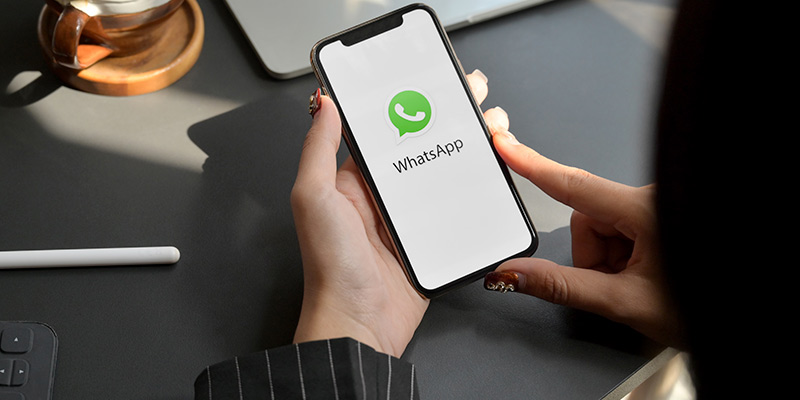RCS vs SMS: Comparison and interactive simulator
Discover in real time how your SMS message transforms when you send it as RCS.
What is RCS and what is SMS?
Discover the differences between classic SMS and the new RCS standard to understand why this evolution is transforming business messaging.

What is RCS and how does it work?
RCS is the evolution of SMS. Allows sending rich messages with images, videos, buttons, carousels, location, read receipts, suggested replies, and more. Works on compatible phones, without the need for external apps. You can also display the company name, logo, and identity verification, increasing trust for the recipient.
What is the SMS protocol?
SMS is a universal messaging system that allows you to send short text without requiring internet access. Although reliable, it is limited in functionality and design. It was introduced in the 1990s and has since become a global standard due to its simplicity and universality.
Why are RCS and SMS compared?
Both channels allow you to reach users via mobile messaging, but RCS offers a much richer experience tailored to modern marketing. Companies seeking to improve engagement, increase conversions, and deliver a richer customer experience are evaluating how to migrate from SMS to RCS or how to strategically combine them. This comparison is key to understanding which channel is best suited to each case.
Differences between RCS and SMS
Although both channels allow sending messages to users’ phones, their capabilities and impact levels are very different.
Detailed comparison: SMS vs RCS
| SMS | RCS | |
|---|---|---|
| Content | Text only | Text, images, videos, buttons, carousels |
| Interactivity | No | Suggested replies, CTA buttons, conversational flows |
| Branding | Not personalized | Logo, colors, verified company name |
| Delivery | Works on all phones | Depends on the carrier and device |
| Tracking | Limited | Real-time stats (delivery, read, clicks) |
| Cost | Low | Medium/high (depending on operator and volume) |
| Connectivity | No internet required | Requires mobile data or Wi-Fi |
| Compatibility | Universal, any device | Only Android compatible with RCS and supported carrier |
| Security | No advanced encryption | End-to-end encryption (depending on provider) |
| User experience | Basic | Conversational, visual and seamless |
| Estimated conversion rate | Medium | High (due to design and interactivity) |

RCS vs SMS in marketing: which generates more engagement?
RCS campaigns offer a significantly higher interaction rate thanks to their ability to include images, buttons, and rich conversational experiences. While SMS remains effective due to its universal reach, RCS enables visual and two-way communication, ideal for boosting conversions.
Technical limitations and advantages
SMS is compatible with any mobile phone, no internet required. On the other hand, RCS requires a data connection and carrier compatibility. In return, it offers a more modern experience and app-like features without needing to install anything extra.
Interactive simulator RCS vs SMS
Visually and practically compare how your campaign would look depending on the channel you choose: RCS or SMS.
Explore the key differences in design, interactivity, multimedia content, and features that can make a difference in your communication strategy.
Content
Multimedia
RCS allows including images, videos, buttons, and carousels. SMS is text-only.
Interactivity
advanced
RCS enables suggested replies and dynamic flows, enhancing the user experience.
Real message preview
See how your message will appear in RCS and SMS with real examples.
Impact on conversions
RCS’s enriched design can increase engagement and CTR.
Compare and decide
Evaluate which channel best fits your audience and goals.
Enter your company information

SMS

RCS



Company profile in RCS messages


Call
Web site
Information
Options
Telephone
Website
Support Email
Use cases and real examples
RCS and SMS are used in different contexts depending on the type of message, audience, and campaign goals.
How do big brands use RCS?
Companies such as banks, airlines, e-commerce platforms, and mobile operators already use RCS to send visual notifications, boarding passes, personalized promotions, and interactive surveys. Thanks to its enriched design, users can interact directly without leaving the conversation.
When is it appropriate to use traditional SMS?
SMS remains ideal for critical alerts, 2FA authentication, appointment confirmations, and urgent messages—especially in low-connectivity areas or on devices not compatible with RCS.
Campaign examples: RCS vs SMS
Imagine a promotional campaign for an e-commerce. With SMS, you could only send plain text with a link. With RCS, you could show a product image, buttons for quick purchase options, and an automatic reply if the user has questions.
Another example: an airline can send a notification via RCS with the boarding pass, gate information, and buttons to change the seat, whereas SMS would only include a text message with a link.
The choice between RCS and SMS will always depend on context, but using both strategically can enhance your brand communication.

Advantages of RCS over SMS (and its limitations)
RCS represents a qualitative leap over SMS in terms of functionality, design, and user experience. However, it still presents some challenges to consider.

Benefits of RCS for businesses
Current limitations and challenges of RCS
Despite its limitations, RCS is a powerful tool for businesses looking to stand out, deliver rich experiences, and measure the real impact of their communications.
Launch your SMS or RCS campaigns according to your communication needs
Sign up for free at 360NRS and start sending SMS or RCS messages to your clients. You can also easily integrate it with your system via API if needed.
Which should you choose for your communication strategy?
Both RCS and SMS are powerful messaging tools. The key is knowing when to use each and how to combine them to maximize the impact of your campaigns.
RCS vs SMS: when to use one or the other?
Use SMS for urgent messages like verification codes, alerts, or reminders. It's universal and works without internet. Use RCS when you want to enhance user experience with images, buttons, and interactive conversations.
Mixed strategies: combining SMS and RCS smartly
The best strategy is often to combine both channels: send RCS to compatible devices and use SMS as fallback when they are not. This ensures reach and leverages the best of each technology.
How to migrate or start using RCS with your current provider?
If you're already working with a provider like 360nrs, activating RCS is easy: verify your brand, design your rich messages, and enable automatic fallback to SMS to ensure deliverability.
You can start with pilot campaigns, measure results, and then scale your strategy more confidently.

Do you have questions about RCS vs SMS?
Find answers to the most common questions about these two messaging channels and choose the one that best fits your strategy.

Not necessarily. Both can coexist. RCS is positioning itself as an evolution of SMS, but still depends on device and operator support.
In that case, the message is not delivered as RCS. A fallback to SMS can be configured to ensure delivery.
SMS has a lower unit cost, but RCS can be more cost-effective in campaigns where engagement and conversion are key.
RCS allows sending visual messages with images, videos, buttons, and interactive replies, while SMS only supports text.
It also provides read and click statistics, personalized branding, and an experience similar to modern messaging apps.
SMS is a basic text channel with wide coverage. RCS is its evolution: it allows messages to be enriched with visual and interactive elements.
While SMS works on any mobile phone, RCS requires an internet connection and device/operator compatibility.
Yes, RCS works through mobile data or Wi-Fi. It's one of its main differences compared to SMS, which uses the cellular network.
Not all phones are compatible with RCS. In such cases, you can set up a fallback so the message is sent as a standard SMS.
It depends on your goals. Use SMS for urgent messages and RCS for visual, interactive, and conversion-focused campaigns.
You can also combine them to get the best of both worlds.
Contact a provider like 360nrs, register your brand, and start sending rich messages with automatic fallback to SMS.
Learn more about RCS messages and our conversational channels
SIGN UP FREE NOW
An unprecedented ROI in your transactional and promotional Marketing actions
More than 20 years experience
Specialized support
Free test
 Try it free without obligation. APIs and integrations available.
Try it free without obligation. APIs and integrations available.





